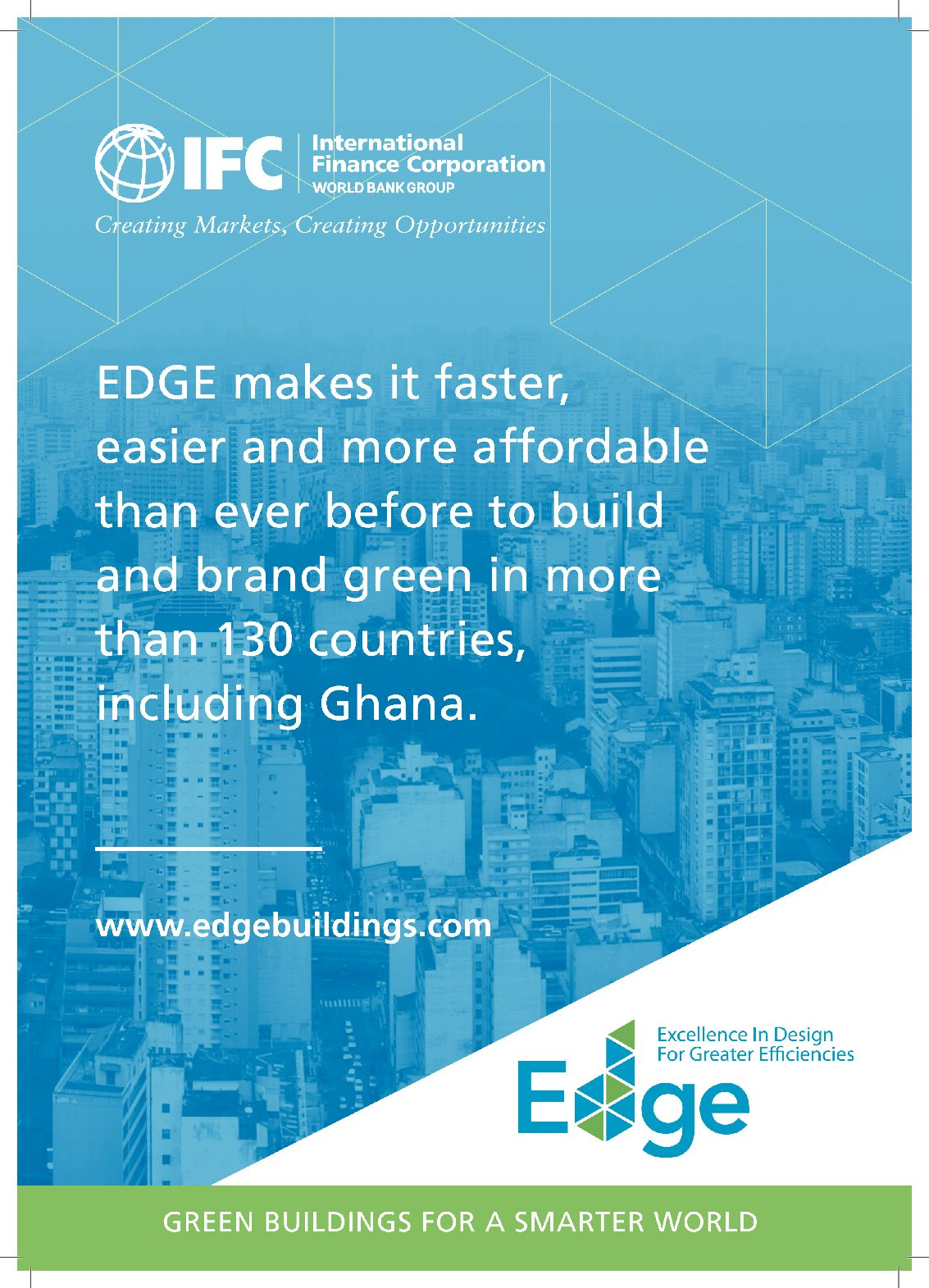Top of the day to you fellow Ghanaians. I trust you are keeping well. If you are a keen reader of this column, you surely must have now acquainted yourself with green buildings. However in as much as it is good to go green, there has to be some minimum standards met, building evaluated and certified green before you can market it as such. At the 3rdGhana Green Building Summit, we discussed this extensively under the topic, Green to Gold – Why a push for certification beyond meeting basic Green standards and regulations will be the new marketing gold. In keeping with the promise to unpack some of the conversations here, find below, presentations from Dennis Papa Odenyi Quansah, Green Building Lead Ghana, IFC EDGE Program and Dr. Adolf Acquaye– Associate Professor in Sustainability, University of Kent, UK.
“A life cycle thinking perspective”
Dr. Adolf Acquaye in his presentation on why Certification will be the new marketing gold made a remark that was quite poignant and set the discussion in proper context- Dr. Acquayenoted that, to have a profound discussion, Certification should be looked at it from the angle of the life cycle of buildings –a life cycle thinking perspective. The life cycle of buildings is not just the building structure which would be built on site but it involves other processes including designing, planning, material selection and all the other processes within the value chain.
Other key highlights of his presentation are captured below:
Drivers of Certification
Evolution of Certification Systems
The evolution of how building rating systems started off with BREEAM in 1990 through LEED from the USA in 2000 and in Ghana’s case, The Green Star. Ghana worked with South Africa in order to incorporate the Green Star into a Green Star SA-Ghana Certification system. One Airport Square in Accra was the first building to be certified under the cooperation.
Types of Certifications
Benefits of Certification
EDGE Program
Dennis Papa Odenyi Quansah provided an overview of the push and pull factors for going green before delving into his the crux of his presentation which focused on EDGE Program and the benefits of adopting green build concepts as well as addressing the cost benefit conundrum. Highlights of his presentation are outlined below.
The Cost Factor
By going green, there is the perception that build costs increased by about 12%, but the reality however is that averagely, it only increased by between 0% and 3%. The critical consideration for cost savings depends on how one initiates the project, by incorporating green considerations right from the start, at the design stage.
The Simplicity of the EDGE Software for Certification
EDGE (EXCELLENCE IN DESIGN FOR GREATER EFFICIENCIES) is a global innovation by the World Bank Group and its subsidiary, the IFC. EDGE offers a faster, easier, and more affordable way to build and brand green. It includes a software that helps to identify the most practical ways to build green.
A developer can see, online, the extra cost to build green and the time it takes to pay back through lowered utility bills. Another key differentiator of EDGE is that, it seeks to obtain or achieve a minimum base line performance of 20% for three (3) standards of material, water and energy as compared to Green Star for instance, which has about nine standards and very robust processes. Once the project is inspected and it meets the minimum EDGE standards, it gets the certification.
Key Benefits
The business case for going green include but not limited to; lower operational costs, increased revenue, reduced utility bills, access to funding, increased market value.
Case Studies -Bankable Projects
In South Africa, IHS (International Housing Solutions) analyzed and compared projects that had been built green versus those built with conventional technology and realized an interesting pattern; those built green saved their tenants a minimum of one month’s rent over the year from reduced utility bills. Absa has introduced up with a new facility called Absa Eco Loan to support purchases of buildings that are certified green.
In Kenya, a developer in October 2019, launched and raised $50 million though a green bond to build about 40,000 accommodation units, which will be EDGE certified, across various universities. The government is also providing free land for affordable housing projects once it meets the EDGE standard.
In Nigeria, the government partnered a private developer to build 100,000 homes within 5 years, all of which have been certified. That certification has positioned the developer to access more lands from the government for new developments.
In Ghana, the Takoradi Mayor has granted an incentive for buildings that will be built green in the city to enjoy 30% off their utility bills.
Certified Projects in Ghana
Some of the certified projects in Ghana include; Tema Port–Terminal 3; CalBank Head Office; Takoradi Mall; Atlantic Tower; Pullman Hotel Accra; World Bank Office; PWC Tower and Komfo Anokye Hospital etc.
It is important to note another advantage of EDGE patronage. Upon EDGE certification, IFC endorses and market that certified project by branding its marketing materials with the World Bank Logo, as well as assisting with development of promotional videos. This done all with the support of the EDGE Program which is actually donor supported, with SECO and the UK government being the main donors.
PRESENTED BY DENNIS PAPA ODENYI QUANSAH, GREEN BUILDING LEAD GHANA, IFC EDGE PROGRAM AND DR. ADOLF ACQUAYE- ASSOCIATE PROFESSOR IN SUSTAINABILITY, UNIVERSITY OF KENT, UK ,AT THE 3RD GHANA GREEN BUILDING SUMMIT










